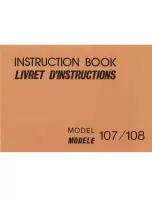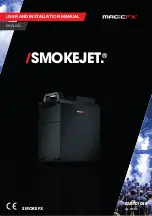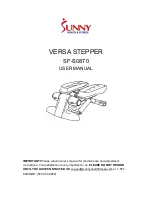
10 - 1
Heat sealing
10
Heat sealing
The machine must only be operated by appropriately trained personnel! The
operating staff must also make sure that only authorized persons are in the
danger area of the machine!
10
.01
Heat-sealing principle
In order to achieve optimum heat-sealing, certain conditions concerning the workpiece and
the machine settings must be fulfilled.
The material must be:
●
heat-sealable
●
be suitable for use on the machine with regard to thickness and properties
In the seam area, the material to be heat-sealed must be clean and free from parting agents
such as e.g. oil or silicone.
The basic requirements on the heat-sealing machine are:
●
the correct working temperature of the hot-wedge or the correct hot air temperature;
●
the correct setting of the hot-air pressure on machines with hot-air nozzle
●
the correct setting of the hot wedge to the roller gap on machines with hot wedge
●
correct selection of the feed rollers (silicone or steel)
●
optimum pressure of the feed rollers on the workpiece
●
correct distance between the feed rollers (penetration depth adjustment) and
●
correct sealing speed.
All settings of this heat-sealing machine always depend on the type of material
being heat-sealed and the ambient temperature. Due to the influence of
individual operating parameters on each other, optimum settings can only be
determined through test sealings.
10
.02
Heat-sealing process
●
Select the correct machine setting for each material (see
Chapter 9 Setting up)
●
Place the workpiece between the feed rollers.
●
Fix the material using the foot switch .
-Position 1 on machines with one foot switch
-Foot switch 1 on machines with two foot switches
●
Using the foot switch, move the heating element into position and start the feed rollers.
-Position 2 on machines with one foot switch
-Foot switch 2 on machines with two foot switches
●
During the heat-sealing process the material must be fed manually.
●
Interruption of the heat-sealing process (e.g. to change the position) the feed rollers
move slightly in the reverse direction
-Switching back the foot switch to position 1 (on machines with one foot switch)
-Engage foot switch 1 again (on machines with two foot switches)
Содержание 8304-020
Страница 45: ...13 2 91 211 696 95 Part 1 Version 18 03 99 Circuit diagram general plan...
Страница 46: ...13 3 Circuit diagram general plan Version 18 03 99 91 211 696 95 Part 2...
Страница 47: ...13 4 91 211 696 95 Part 3 Version 18 03 99 Circuit diagram general plan...
Страница 48: ...13 5 Circuit diagram general plan Version 18 03 99 91 211 696 95 Part 4...
Страница 49: ...13 6 91 211 696 95 Part 5 Version 18 03 99 Circuit diagram general plan...
















































